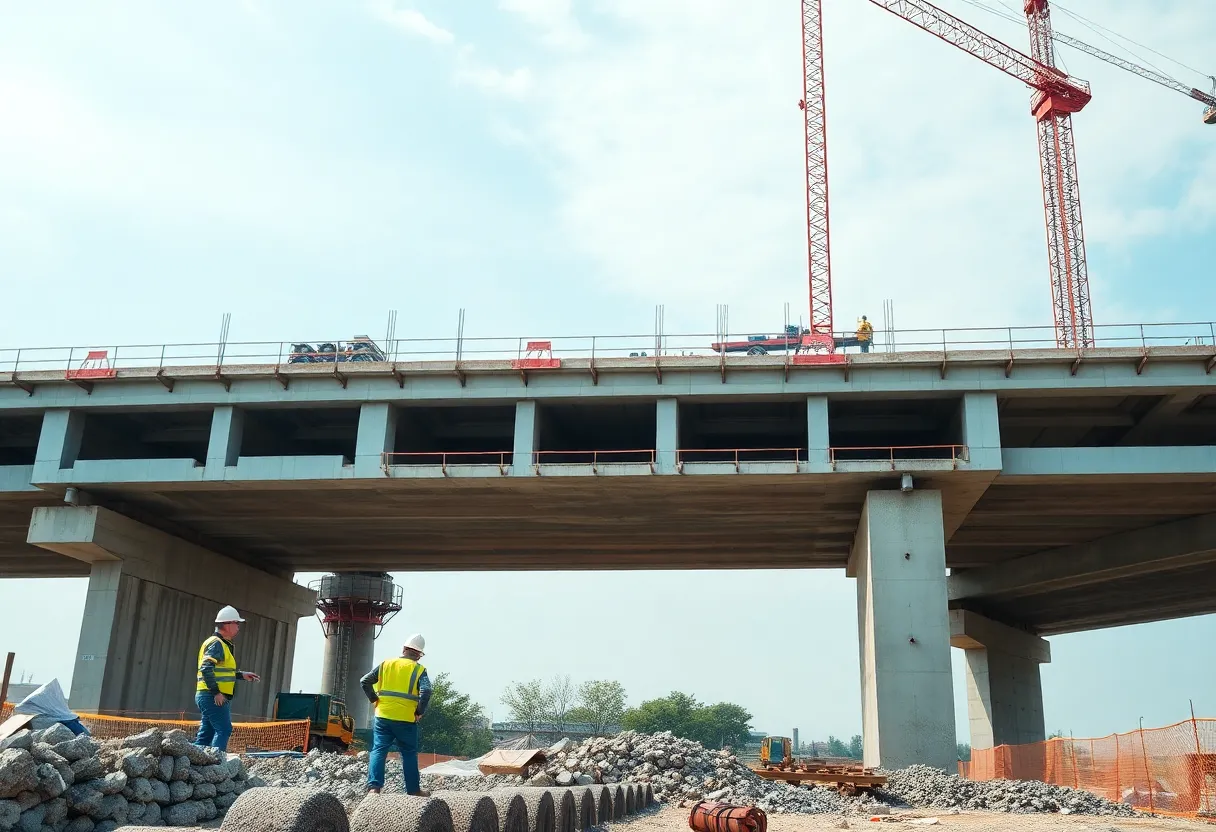News Summary
A recent study has analyzed the critical construction parameters affecting the cantilever construction of prestressed concrete continuous girder bridges. Findings emphasize the significance of temperature variations and prestressing loss on bridge alignment and stress states. A robust monitoring system, applied in the Shenyang Metro Line 3 project, provided real-time insights during the construction phase. The study highlights the importance of closely observing these parameters to ensure the structural safety and integrity of bridges, with recommendations for utilizing advanced technologies in future projects.
Shenyang, China – A recent study has utilized finite element modeling to investigate the variations in construction control parameters during the cantilever construction of prestressed concrete continuous girder bridges. The research highlights how factors such as concrete unit weight, elastic modulus, prestressing loss, concrete shrinkage, creep, and temperature can significantly impact bridge alignment and stress states at both the completion stage and during maximum cantilever conditions.
The key findings reveal that temperature variations and prestressing loss are the most critical parameters affecting girder alignment and stress. Concrete elastic modulus and unit weight emerged as having relatively minor effects. This emphasizes the need for construction teams to prioritize monitoring these influential factors to ensure successful bridge construction, particularly during the cantilever process.
The construction of prestressed concrete continuous girder bridges has been increasing due to their notable advantages, including structural stiffness, integrity, and cost-effectiveness. However, issues such as construction errors, material property discrepancies, and ambient temperature fluctuations commonly lead to differences between actual and theoretical structural parameters during bridge segment casting.
To address these challenges, a robust construction monitoring system was developed, focusing on the combined effects of critical construction control parameters. This system was actively applied to the cantilever casting process of the Shenyang Metro Line 3 project from October 2023 to August 2024, providing real-time data on various aspects of the construction phase.
The finite element model created for this study simulates the entire construction sequence and includes essential stages such as concrete pouring and the tensioning of prestressed steel strands. Through a comprehensive sensitivity analysis, variations in control parameters’ influences on cumulative deflections and stresses were examined, revealing that these effects are more pronounced in the completed state than during maximum cantilever conditions.
The monitoring system included multiple aspects: stress monitoring, geometry monitoring, and temperature monitoring. These features allowed for a thorough assessment of the parameters affecting bridge construction. The study also established limits for parameter variations and highlighted coupling effects, revealing nonlinear interactions between different parameters.
A total of twelve load-case combinations were tested to analyze how adverse combinations of parameters could affect deflection and stress outcomes. Proposed early-warning thresholds were set for construction monitoring, indicating a maximum deflection difference of 25.73 mm and maximum stress differences of 5.13 MPa and -9.26 MPa for the top and bottom slabs, respectively.
The emphasis on construction quality management was pronounced, particularly regarding equipment related to prestressing and the necessity for temperature-controlled operations. As the construction of these bridges continues to grow, future recommendations suggest integrating Building Information Modeling (BIM) and Internet of Things (IoT) technologies to enhance real-time monitoring and parameter calibration.
Overall, the findings from this research underscore the critical importance of closely observing all monitored parameters to ensure both the structural safety and integrity of prestressed concrete continuous girder bridges during construction. With the right monitoring and management measures in place, the industry can significantly improve the reliability and durability of these vital infrastructure elements.
Deeper Dive: News & Info About This Topic
HERE Resources
Additional Resources
- Nature: Construction Control Parameters
- Wikipedia: Bridge
- Chosun: North Korea News
- Google Search: Prestressed Concrete Bridges
- Wiley Online Library: Engineering Research
- Encyclopedia Britannica: Structural Engineering
- VOA News: China-North Korea Rail Link
- Google News: Construction Monitoring
- Smithsonian: Beautiful Bridges
- Google Scholar: Finite Element Modeling
Author: STAFF HERE CLEVELAND WRITER
The CLEVELAND STAFF WRITER represents the seasoned team at HERECleveland.com, your premier source for actionable local news and information in Cleveland, Cuyahoga County, and beyond, delivering "news you can use" with in-depth coverage of product reviews for personal and business needs, local business directories, politics, real estate trends, neighborhood insights, and state news impacting the region—backed by years of expert reporting and robust community input, including local press releases and business updates, while providing top reporting on high-profile events like the Rock and Roll Hall of Fame inductions, Cleveland International Film Festival, and holiday parades, alongside key organizations such as the Cleveland Clinic, Cleveland Orchestra, and Great Lakes Science Center, plus leading businesses in manufacturing and healthcare like Sherwin-Williams and University Hospitals, and as part of the broader HERE network including HEREDayton.com, offering comprehensive, credible insights into Ohio's vibrant landscape. HERE Cleveland HERE Dayton





